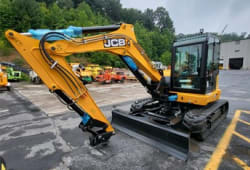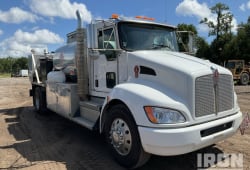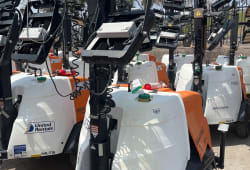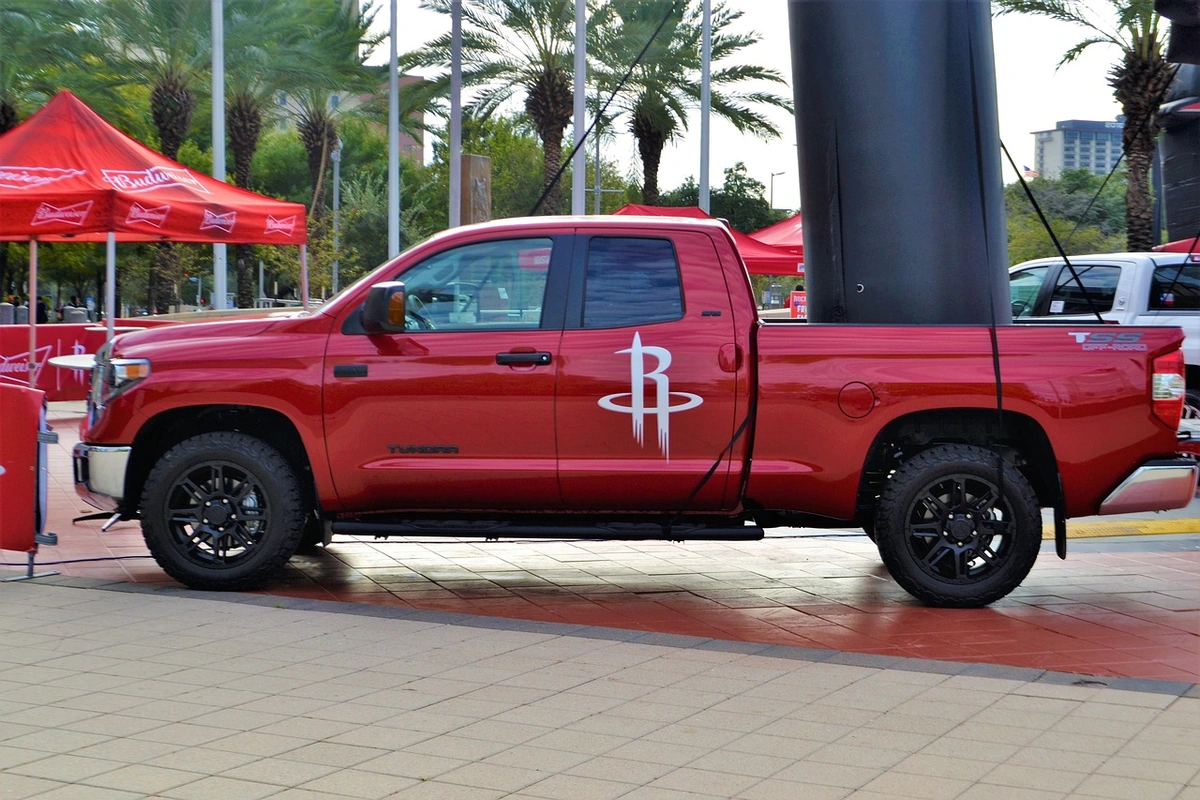Unearthing Earth's Riches: Navigating the World of Mining Equipment
9 Lectura mínima
)
enero 20, 2024
From the depths of the planet, where valuable minerals and resources lie hidden, to the intricate processes of extraction and refinement, this exploration unravels the pivotal role mining plays in shaping our modern world. As we navigate the geological landscapes and technological advancements that define this industry, we discover the delicate balance between resource utilization and environmental stewardship.
Join us on a captivating odyssey that illuminates the significance, challenges, and innovations within the dynamic world of excavation.
Mining involves a complex process that requires a variety of specialized equipment to extract valuable minerals and resources from the Earth. Each piece of equipment plays a crucial role in the overall operation.
Let's explore step-by-step the equipment used and their key roles in mining.
Articulated trucks
Also known as articulated hauliers or off-highway trucks, are robust and versatile vehicles widely used in the excavation industry for the transportation of heavy materials and minerals within mining sites.
Here are the key aspects of articulated trucks and their crucial role in the world of earth-moving:
Design and Features:
Articulation Joint: The hinge joint, or articulation joint, enables the truck to articulate or pivot in the middle, allowing it to navigate uneven and rough terrains with greater flexibility. This feature ensures that all wheels maintain contact with the ground, providing enhanced traction and stability.
All-Wheel Drive: Articulated trucks typically have an all-wheel-drive system, distributing power to all wheels. This is essential for traversing varied and often difficult terrain encountered in these operations.
High Ground Clearance: These trucks are designed with high ground clearance to navigate over rocks, debris, and other obstacles commonly found in excavation sites.
Heavy-Duty Construction: Articulated trucks are built with a robust frame and heavy-duty components to withstand the harsh conditions of earth-moving operations, including heavy loads and rough terrain.
Role and Uses:
Hauling Ore and Overburden: One of the primary roles of articulated trucks is the transportation of mined materials, such as ore, overburden, and other excavated materials, from the site to processing plants or designated dumping areas.
Payload Capacity: Articulated trucks have substantial payload capacities, making them efficient for transporting large quantities of materials in a single trip. This helps optimize the efficiency of these operations and reduces the need for multiple trips.
Navigating Challenging Terrain: The articulated design allows these trucks to navigate tight turns and uneven surfaces, making them well-suited for excavation environments with restricted space and challenging topography.
Access to Remote Areas: Articulated trucks can access remote areas within sites where conventional rigid trucks may struggle. This accessibility is crucial for optimizing the extraction and transportation of materials in these operations.
Stability on Inclines: The articulated design and all-wheel-drive system contribute to the stability of these trucks on inclines, reducing the risk of accidents and ensuring the safety of operators.
Excavators
Excavators are heavy construction machines widely utilized in earthly operations for their versatility, power, and efficiency in various tasks.
Here, we'll explore the key features, functions, and uses of excavators in this industry:
Design and Features:
Bucket and Boom System:
Excavation Attachment: Excavators are equipped with a bucket attached to a boom and arm. This design allows for efficient digging, scooping, and lifting of materials, making them ideal for excavation tasks in earth moving.
Mobility: Excavators may have either crawler tracks or wheels, providing mobility across diverse terrains commonly found in the sites. Crawler tracks offer enhanced stability on uneven surfaces, while wheeled excavators are more maneuverable on flat terrain.
Hydraulic Power: Excavators rely on hydraulic systems to power their movements and attachments. This hydraulic power enables precise and controlled digging, lifting, and swinging motions, making them versatile and efficient.
Role and Uses:
Open-Pit Mining: Excavators are commonly used in open-pit operations for the excavation of ore, overburden, and other materials. They can efficiently remove large volumes of material from the ground, contributing to the extraction process.
Loading Haul Trucks: Excavators are employed to load haul trucks with mined material, whether it be ore, rock, or overburden. The efficient loading of trucks is crucial for the timely and cost-effective transportation of materials within the site.
Infrastructure Development: Excavators play a key role in site preparation for the operations. They are used for digging trenches, levelling the ground, and creating foundations for infrastructure such as processing plants, conveyor systems, and other facilities.
Scrapers
Scrapers are heavy equipment used for earthmoving and material handling purposes. Here's an
Design and Features:
Bowl or Hopper:
Scrapers are equipped with a large bowl or hopper at the front, which can be lowered to the ground for scooping up and collecting materials.
Cutting Edge:
The cutting edge at the bottom of the bowl allows the scraper to cut into the earth, collecting and transporting materials efficiently.
Elevating System:
Scrapers typically have an elevating system that lifts the loaded bowl for transport. This system allows the scraper to carry a substantial amount of material over a distance before unloading.
Role and Uses:
Excavation: Scrapers are used for excavation purposes, particularly in the removal of overburden (soil, rock, and other materials covering a mineral deposit) to expose the ore or mineral-rich layers beneath.
Load and Carry: Scrapers are often involved in load-and-carry operations where they load material at one location and transport it to another, providing a cost-effective solution for material handling within a site.
Site Preparation: Scrapers are used in site preparation activities, levelling the ground and compacting soil to create a stable foundation for subsequent excavation processes or infrastructure development.
Below are two examples of equipment used in mining
Crawler carriers
Crawler carriers play a crucial role in the mining process, providing robust and versatile transportation of heavy loads in challenging terrains. Two examples of crawler carriers used in mining are the 2017 Caterpillar 323F L and the 2013 CASE 821F.
Let's delve into the features and capabilities of each.
Caterpillar 323F L:
Overview: The Caterpillar 323F L is a hydraulic excavator that can be equipped with a crawler carrier configuration. Caterpillar is a renowned brand in the construction and mining equipment industry, known for its reliability and innovation.
Crawler Carrier Configuration: The crawler carrier configuration enhances the machine's mobility and stability, making it well-suited for navigating rough and uneven terrain commonly found in the sites.
Powerful Engine: The 323F L is likely equipped with a powerful engine to provide the necessary force for both excavation and transportation tasks. The engine's efficiency contributes to the overall productivity of these operations.
Hydraulic System: The hydraulic system is a critical component, enabling precise control of the excavator's movements and attachments. In a crawler carrier configuration, it facilitates efficient load transportation.
CASE 821F:
Overview: The CASE 821F is a wheel loader designed for heavy-duty applications, and in a crawler carrier configuration, it becomes a reliable transport solution in operations.
Crawler Carrier Configuration: The crawler carrier adaptation transforms the traditional wheel loader into a tracked machine, enhancing its mobility on soft or uneven ground. This is particularly advantageous in mining environments with diverse terrains.
Payload Capacity: The 821F, as a crawler carrier, likely has a substantial payload capacity, allowing it to transport large quantities of material within the site efficiently.
Terex RT230:
Overview: The Terex RT230 is a rough terrain crane, a type of mobile crane specifically designed to operate in challenging off-road conditions. It is known for its versatility and ability to navigate uneven terrains commonly found in sites.
Uses:
Heavy Lifting: The Terex RT230 is utilized for heavy lifting tasks. It can handle the lifting and positioning of heavy equipment, components, and materials during construction, maintenance, or repair activities within the site.
Infrastructure Construction: This rough terrain crane is often employed in the construction of mining infrastructure, including the assembly of steel structures, installation of equipment, and other tasks requiring precise and powerful lifting capabilities.
Link-Belt LS338:
Overview: The Link-Belt LS338 is a lattice-boom crawler crane known for its strength, stability, and lifting capacity. Crawler cranes are equipped with tracks for mobility, making them suitable for navigating through uneven and soft terrains in mining environments.
Uses:
Heavy Lifting in Confined Spaces: The LS338 is employed for heavy lifting tasks in confined or restricted spaces. Its lattice-boom design allows for extended reach and precise control, making it suitable for lifting and placing heavy components in tight quarters.
Dragline Operations: Crawler cranes like the LS338 are sometimes used in dragline operations, contributing to the excavation and material handling processes in open-pit mining. They can assist in positioning and moving dragline components during maintenance or assembly.
Conclusion:
In the intricate world of mining equipment, from articulated trucks to crawler carriers and cranes like Terex RT230 and Link-Belt LS338, each machine plays a vital role in resource extraction. This exploration highlights the industry's delicate balance between progress and environmental stewardship. As we delve into the innovations and challenges, it becomes clear that mining's significance extends far beyond the depths of the Earth, shaping our modern world and driving technological advancements with each excavation.

Caleb Woods is an experienced content specialist and an editor at Boom & Bucket, blending his journalism background with expertise in the heavy equipment industry. He delivers engaging, informative content to help professionals stay informed and make smarter decisions in the machinery market.














